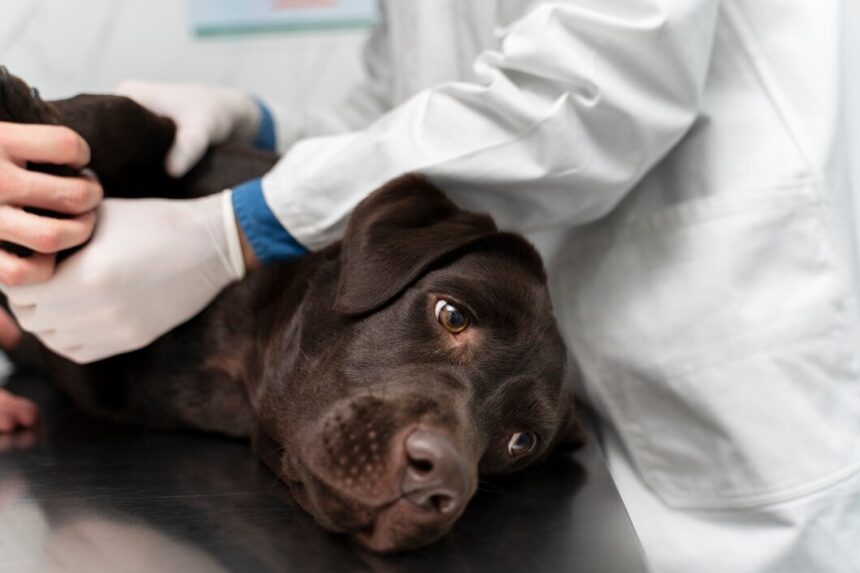Foot and mouth disease (FMD) is a highly contagious viral infection that affects cloven-hoofed animals, including cattle, pigs, sheep, goats, and deer. It is caused by the Aphthovirus and can spread rapidly, leading to significant economic losses in the livestock industry. Understanding the symptoms, causes, and treatments of FMD is essential for controlling its spread and protecting animal health.
Symptoms of Foot and Mouth Disease
The symptoms of FMD vary depending on the species affected and the severity of the infection. However, the most common signs of the disease include:
1. Fever
One of the first signs of FMD is a sudden rise in body temperature. Infected animals may experience a fever that lasts for two to three days, after which other symptoms become more evident.
2. Blisters and Lesions
Blisters, or vesicles, develop in and around the mouth, on the tongue, gums, and lips, as well as on the feet, particularly between the toes and along the hooves. These blisters can rupture, leading to painful ulcers. This causes animals to drool excessively and have difficulty eating or walking.
3. Lameness
Painful sores on the feet and hooves can lead to lameness. Affected animals may avoid standing or walking, becoming immobile due to the discomfort.
4. Loss of Appetite
Because of the painful sores in the mouth, animals with FMD may refuse to eat or drink, leading to weight loss and dehydration.
5. Drop in Milk Production
In dairy cattle, FMD often results in a sudden drop in milk production, which can have a severe impact on the profitability of livestock farms.
6. Rapid Breathing and Weakness
Infected animals may show signs of respiratory distress, such as rapid or labored breathing. Weakness and lethargy are also common as the disease progresses.
Causes of Foot and Mouth Disease
FMD is caused by the Aphthovirus, which exists in several different strains. The disease spreads easily through direct contact between infected and healthy animals, as well as through contaminated environments. Here are the main ways FMD can spread:
1. Direct Animal Contact
The most common route of transmission is direct contact between infected and susceptible animals. This contact can occur through saliva, nasal discharge, milk, or other bodily fluids.
2. Contaminated Surfaces
The virus can survive for extended periods on surfaces such as feeding equipment, vehicles, and clothing. Infected objects or surfaces can transmit the virus to animals that come into contact with them.
3. Airborne Spread
FMD can spread over long distances via airborne particles, particularly in cool and humid conditions. Windborne transmission can infect animals far from the initial outbreak source.
4. Human Involvement
Humans can act as carriers by moving between infected and healthy farms, transporting the virus on their clothes, shoes, or equipment, although they do not contract the disease themselves.
Treatments for Foot and Mouth Disease
There is no specific treatment for foot and mouth disease, but supportive care can help animals recover more comfortably. The focus is generally on controlling the spread of the disease and minimizing its impact. Here are some of the measures taken to manage FMD:
1. Isolation of Infected Animals
Infected animals should be isolated immediately to prevent further spread of the virus. Quarantine measures are often implemented on affected farms.
2. Supportive Care
Veterinarians may provide supportive care to affected animals, including pain relief, proper hydration, and nutritious food to help maintain their strength during recovery. In some cases, topical treatments can be applied to soothe blisters and lesions.
3. Vaccination
Vaccination is an important tool for controlling FMD. There are vaccines available that protect against specific strains of the virus. However, vaccination is not always 100% effective, and animals may still become infected, especially if exposed to a different strain of the virus. Vaccination programs are often used as a preventative measure in regions where FMD is endemic.
4. Culling
In severe outbreaks, culling infected and at-risk animals may be necessary to contain the disease. This drastic measure helps limit the spread of the virus and protect unaffected livestock populations.
5. Strict Biosecurity Measures
To prevent FMD, farmers should implement strict biosecurity measures, such as disinfecting equipment and vehicles, controlling the movement of people and animals, and ensuring that feed and water sources are clean.
Foot and mouth disease is a serious threat to livestock and the agricultural industry. Recognizing the early symptoms, understanding the causes, and taking appropriate treatment and prevention steps are essential for managing outbreaks. While FMD can be controlled through vaccination, strict biosecurity measures, and isolation, early detection and prompt action remain the most effective ways to limit its spread and minimize its economic impact.










